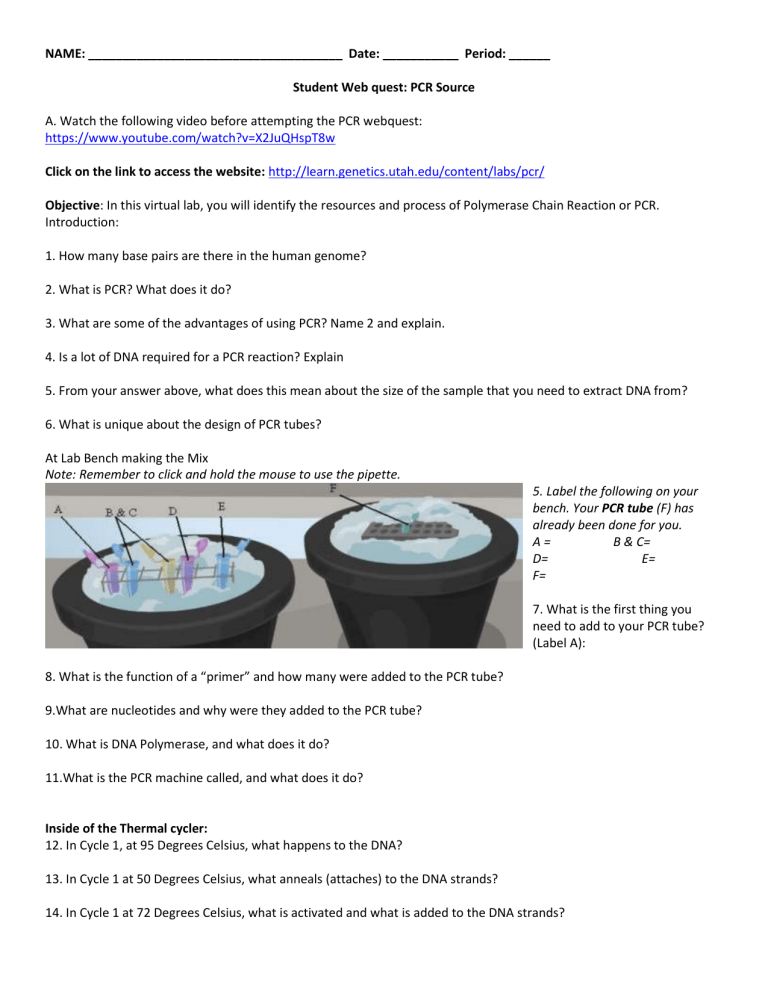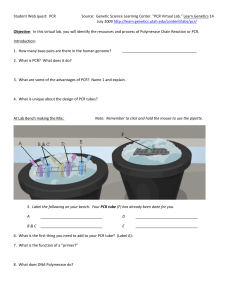
NAME: _____________________________________ Date: ___________ Period: ______ Student Web quest: PCR Source A. Watch the following video before attempting the PCR webquest: https://www.youtube.com/watch?v=X2JuQHspT8w Click on the link to access the website: http://learn.genetics.utah.edu/content/labs/pcr/ Objective: In this virtual lab, you will identify the resources and process of Polymerase Chain Reaction or PCR. Introduction: 1. How many base pairs are there in the human genome? 2. What is PCR? What does it do? 3. What are some of the advantages of using PCR? Name 2 and explain. 4. Is a lot of DNA required for a PCR reaction? Explain 5. From your answer above, what does this mean about the size of the sample that you need to extract DNA from? 6. What is unique about the design of PCR tubes? At Lab Bench making the Mix Note: Remember to click and hold the mouse to use the pipette. 5. Label the following on your bench. Your PCR tube (F) has already been done for you. A= B & C= D= E= F= 7. What is the first thing you need to add to your PCR tube? (Label A): 8. What is the function of a “primer” and how many were added to the PCR tube? 9.What are nucleotides and why were they added to the PCR tube? 10. What is DNA Polymerase, and what does it do? 11.What is the PCR machine called, and what does it do? Inside of the Thermal cycler: 12. In Cycle 1, at 95 Degrees Celsius, what happens to the DNA? 13. In Cycle 1 at 50 Degrees Celsius, what anneals (attaches) to the DNA strands? 14. In Cycle 1 at 72 Degrees Celsius, what is activated and what is added to the DNA strands? 15. What are the end products of Cycles 2 and Cycles 3? 16. Label the processes of DNA replication shown to the left. A B C Analysis and Conclusions 17. Why do you think that everything on your lab bench had to be in ice? 18. Why did the pipette change tips every time? Why is this important? 19. Open the following link and summarize what are SNPs (there are 3 paragraphs, so summarize each piece of information). https://ghr.nlm.nih.gov/primer/genomicresearch/snp 20. Open the following link, and summarize what is DNA Polymorphism (there are 3 paragraphs, so summarize each piece of information) https://www.nature.com/scitable/popular-discussion/680 21) Now you are ready for some historical aspects of PCR. Read and summarize the following information (there are 5 paragraphs, therefore summarize each one. http://bitesizebio.com/19728/the-history-of-pcr/




